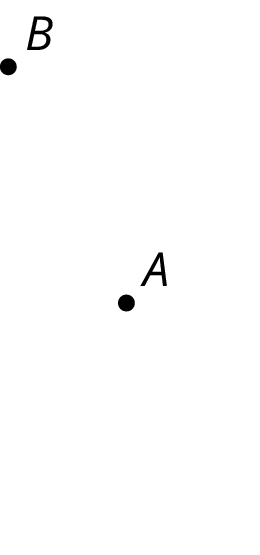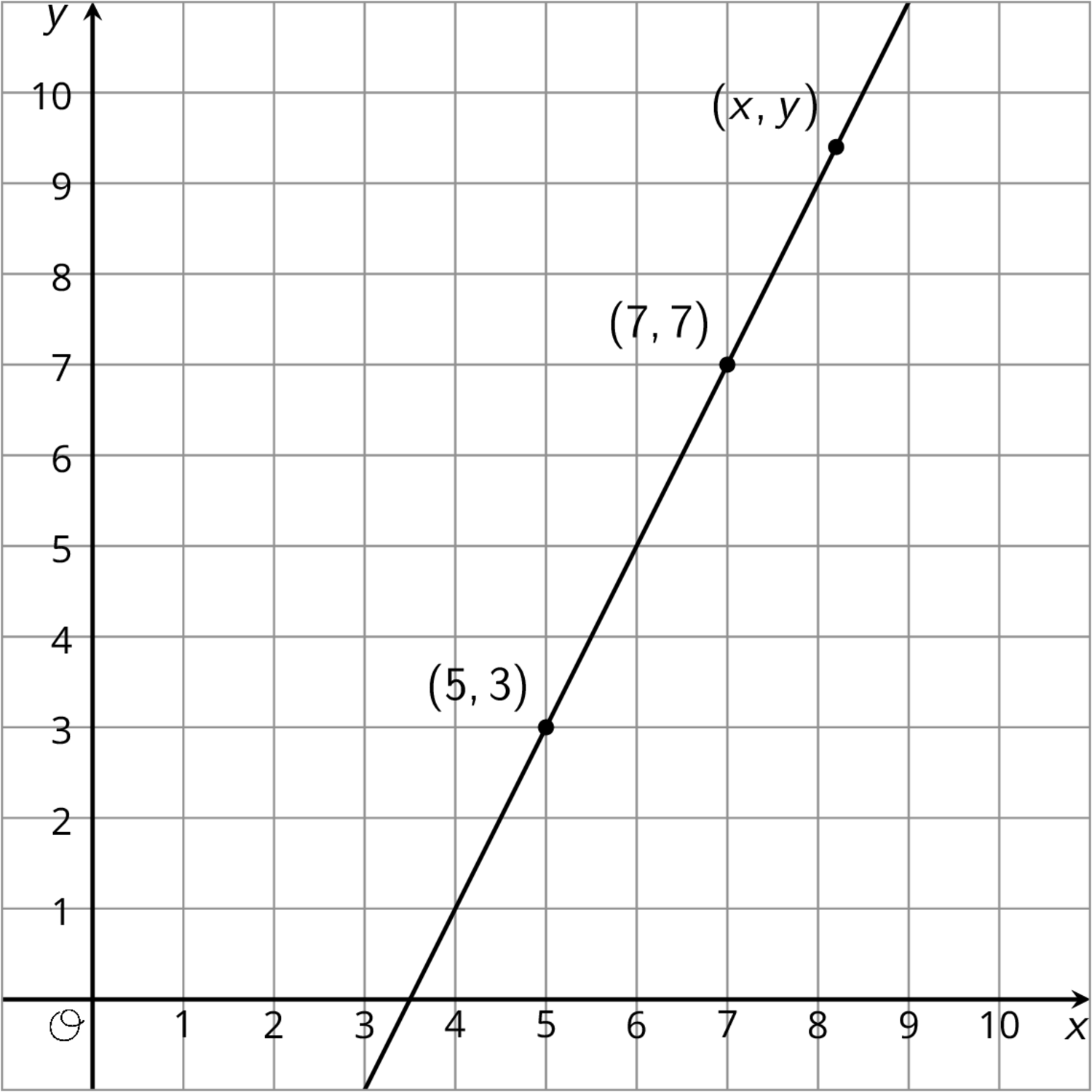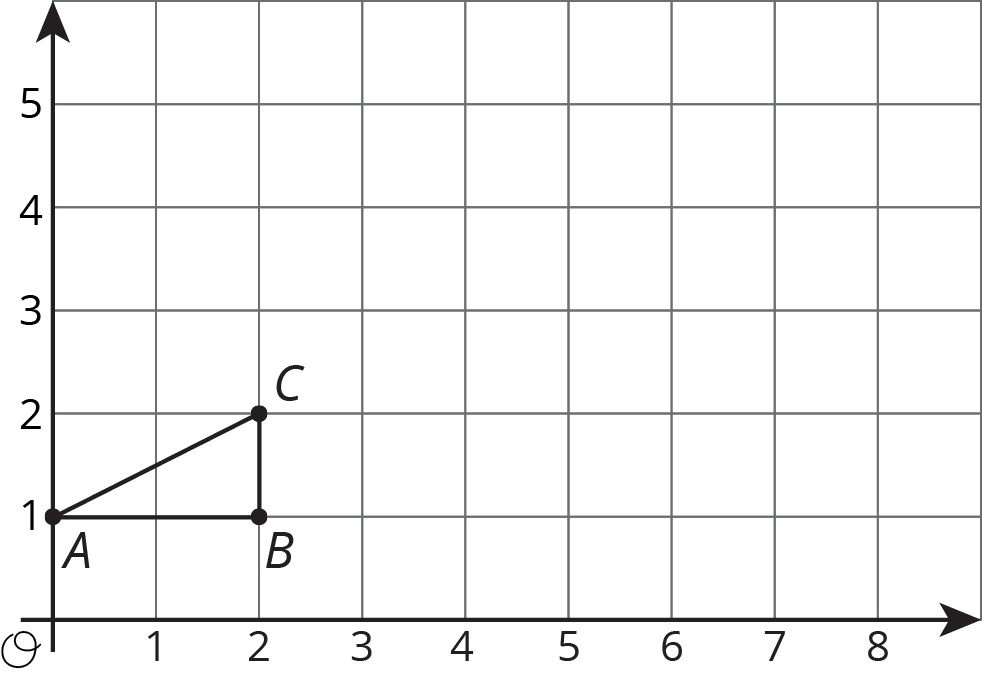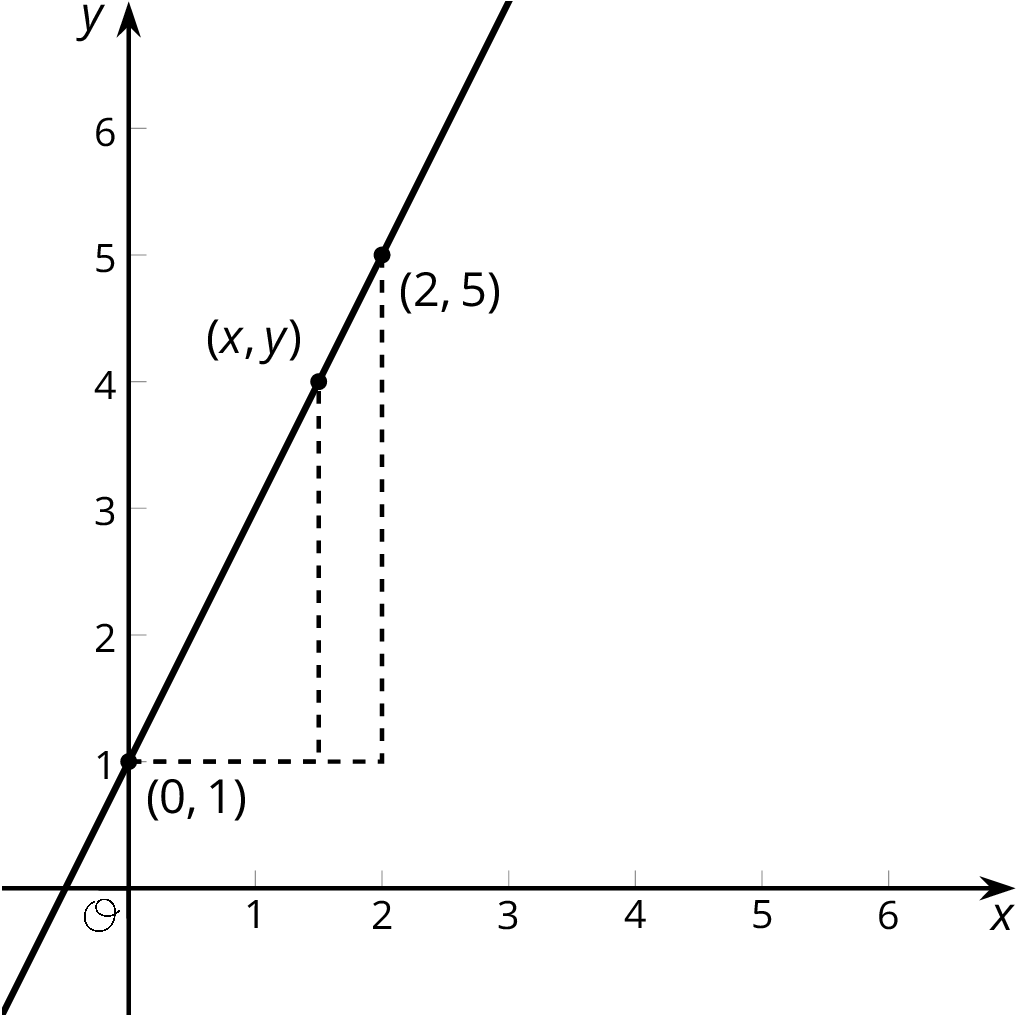12.1: Missing center
A dilation with scale factor 2 sends $A$ to $B$. Where is the center of the dilation?

Let’s write equations for lines.
A dilation with scale factor 2 sends $A$ to $B$. Where is the center of the dilation?

Here is a line.

There are many different ways to write down an equation for a line like the one in the problem. Does $\frac{y-3}{x-6}=2$ represent the line? What about $\frac{y-6}{x-4}=5$? What about $\frac{y+5}{x-1}=2$? Explain your reasoning.
Here is triangle $ABC$.

We can use what we know about slope to decide if a point lies on a line. Here is a line with a few points labeled.

The slope triangle with vertices $(0,1)$ and $(2,5)$ gives a slope of $\frac{5-1}{2-0} =2$. The slope triangle with vertices $(0,1)$ and $(x,y)$ gives a slope of $\frac{y-1}{x}$. Since these slopes are the same, $\frac{y-1}{x} = 2$ is an equation for the line. So, if we want to check whether or not the point $(11,23)$ lies on this line, we can check that $\frac{23-1}{11} =2$. Since $(11,23)$ is a solution to the equation, it is on the line!